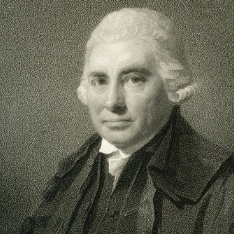
Biography
Alexander Monro secundus was the third son of Alexander Monro primus. He was born in Edinburgh on 20 May 1733 and received his early education at James Mundell’s private school. From an early age, Monro was designated as his father’s successor as professor of medicine and Monro primus took the education of his son seriously. At age twelve, Monro enrolled in the faulty of arts at Edinburgh University, studying Latin, Greek, philosophy, mathematics, physics and history. He began his medical studies in 1750. In 1753, Monro took over teaching his father’s anatomy lessons. At the petition of Monro primus, Monro achieved joint professorship, without qualifications, in 1754. Monro graduated MD in 1755 with a thesis ‘De testibus et semine in variis animalibus’.
Monro joined his brother in London where he studied anatomy under William Hunter, before travelling to Paris. In 1757, Monro returned to Edinburgh to take his father’s place teaching anatomy, owing to Monro primus’s recurring illness. Monro became a fellow of the Royal College of Physicians of Edinburgh in 1759. Monro took up the anatomy lectureship in the academic session of 1758-59, a post he would hold for the next fifty years. His lectures were extremely popular and the number of students in attendance steadily increased over time. In his fifty years as lecturer, Monro became the most influential anatomy professor in the English speaking world. In conjunction with a full teaching schedule, Monro had a thriving private practice.
Monro was an active member of Edinburgh’s intellectual and civic life. He married Katherine Inglis on 25 September 1762 and they had five children. In 1813, Monro had an attack of apoplexy and died four years later, on 2 October 1817.
Notable Achievements
In 1777, Monro succeeded in established and holding the chair of medicine, anatomy and surgery at Edinburgh.
Monro was president of the Royal College of Physicians of Edinburgh from 1779 to 1782.
Key Publications
- De venis lymphaticis valvulosis (Berlin, 1757)
- A state of facts concerning the first proposal of performing the paracentesis of the thorax … and the discovery of the lymphatic valvular absorbent system of vessels, in oviparous animals. In answer to Mr Hewson (1770)
- Observations on the Structure and Functions of the Nervous System (1783)
- The structure and physiology of fishes explained, and compared with those of man and other animals (1785)
- A Description of all the Bursae murcosae of the Human Body (1788)
- Experiments on the nervous system, with opium and metalline substances, made chiefly with the view of determining the nature and effects of animal electricity (1793)
- Observations on the muscles, and particularly on the effects of their oblique fibres: with an appendix, in which the pretension of Dr. Gilbert Blane, that he first demonstrated the same effect to be produced by oblique muscles … is proved to be unfounded (1794)
- Three Treatises. On the Brain, the Eye, and the Ear (1797)



